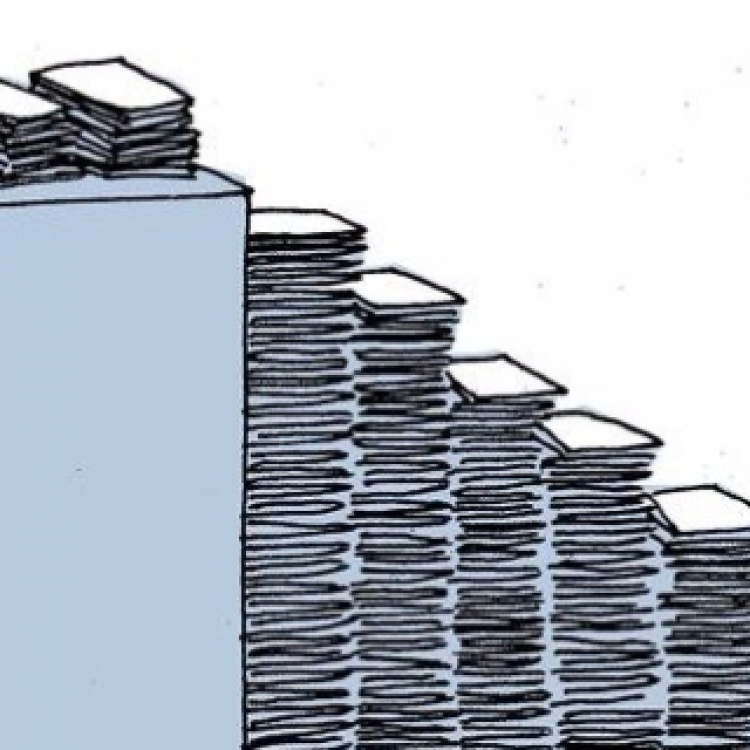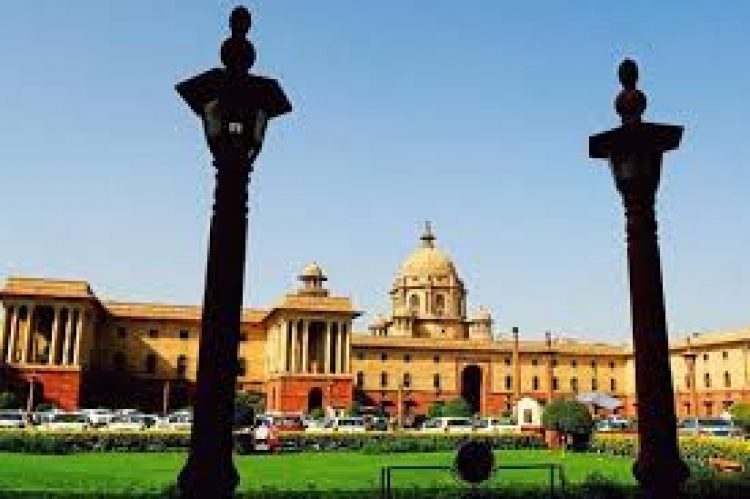
India's Senior Bureaucracy: Generalist, Specialist and The Endless Debate
02 Nov 2017 0 comment(s) Research Essays
This is the second essay of my series on reforming and restructuring the senior civil services of India to enable them to face the onerous governance challenges of our times. Though I have had many thoughts and ideas and have mulled them over from time to time, organising them and putting them in writing has become much more difficult than I originally thought. Perhaps the complexity of the issue at hand, and the ever changing and evolving nature of ideas, challenges and approaches in this field have also played a part in consolidating various strands of thoughts and research into something presentable, though perhaps not very concrete in terms of solid proposals and course of action.
So, this second essay is coming after more than a year, as the first one was published in June 2016. As was outlined in the first essay, this is not actually what would or should have appeared in the second essay. The tentative division of the proposed series indicated that I would first be analysing issues of induction and recruitment and of meritocracy and mediocrity in senior civil services. On the contrary, I am going to discuss issues relating to roles, functions and reorganisations of different ‘branches’ of services first.
I have also realised that a tight compartmentalisation of issues facing the organised senior bureaucracy, as was done in my short essay published in Harvard Kennedy School Review in 2011, may not be a very effective way of closely and critically analysing them, and therefore, I will be freely crossing these imaginary boundaries henceforth. Thus, issues related to method and mode of recruitment and selection, promotion and performance evaluation, tenure and stability, job security and time bound promotion, lateral entry and equal opportunity etc, are not primarily being addressed now, though they are perhaps equally, if not more, important than what I am covering first. These and other related issues will, hopefully, be covered in the subsequent essays.
This discussion on reorganisation of service branches, also presumes that the broader structure of the higher civil services would largely retain its career based permanent civil service character, consisting of officers recruited through open, fair competitive examination, who then work for almost all of their working life in the service. However, the issues related to performance management, lateral entry and opportunity for outside talents can still be tackled within this framework subsequently.
Perhaps the most important institutional reform in senior civil services relates to restructuring and realignment of different branches. There are various interrelated issues here and I will be discussing them one by one and then also examine possible course of organisational reform and restructuring. Thereafter, I will take up specific branches of service in the next essay, and will talk about their reform in light of discussion and findings of the present essay. This essay itself is now long enough, though I hope readers will find it raising and discussing relevant and important issues.
I. Restructuring and Realignment of Branches
The larger issue of the overall structural reorganisation of different branches is perhaps the most important issue which has not been getting the attention it requires. There is an institutional mandate and prescribed procedures for standalone restructuring of different service/branches periodically, to be carried out under the overall guidance and supervision of DoPT (Department of Personnel and Training of Government of India). Though it is not what I mean by a comprehensive overall re-look at the organisation and structure of various branches of civil services, it still gives an opportunity for individual branches to reform and reorganise them in light of changing needs and circumstances. However, this has rarely been done. These periodic restructuring of individual branches have hardly done anything objective and with a long term reform focus. Essentially, these exercises have been reduced to the rigmarole of inter-service comparison and then trying to ensure career/promotion prospects vis-a-vis other branches, often resulting in increasing the size of the service branch and creating redundant structure and superfluous posts, especially at the senior management level. The result has hardly been anything meaningful and rational, what to talk of visionary change.
Further, as all these services have a theoretical parity with IAS, the very different reality which actually prevails has a further dampening effect. A recent government of India study itself has rightly identified that at the national level, the issue of IAS officers occupying most of the senior management level posts is a cause of deep concern and resentment among other branches (Govt. of India, Personnel, 2010). This only highlight the seriousness of the issue where a large number of officers from various central group A services (mostly non-IAS) forming as much as 80% of total group A civil servants are dissatisfied, frustrated and demotivated. This indeed is a very serious organisational problem, often ignored and deliberately overlooked. Many of the officers from smaller and lesser known service branches are demotivated and frustrated, as they have lesser opportunity, limited exposure and poorer career prospects, which is often accentuated by exercises of standalone cadre restructuring.
Another important issue is that of neglect of 'technical service branches' (both at central as well as at states levels) which manages many of the public service delivery and infrastructure provisions. Most of these departments are again staffed by IAS officers at the top – like in education, public engineering, roads transports and public infrastructure, public health and medical services in state governments and in energy, minerals and metals, shipping and transports, education, public healthcare etc in central government - with very little opportunity for bright technical specialist at the top, breeding huge amount of resentment and dissatisfaction. This is not a desirable situation at all and requires urgent steps. A structure where competent, professional, and suitable officers are given due recognition and responsibilities, irrespective of her service affiliation is the need of the hour. Though I will be discussing these issues in reference to civil services alone, the ideas and suggestions will equally be applicable to technical services too.
All such questions become more and more important in this era of highly dynamic social and economic challenges of our country and also in light of the fact that these challenges are no less humongous and complex then they were at the time of independence. It becomes important more so as the structure of higher bureaucracy has hardly changed and reformed since independence, and it is a fair claim that perhaps the present structure of civil services and its branches does not represent the realities of India, and is poorly equipped to handle and face the complex challenges of modern India.
The present organisation of civil service makes it instantly clear that it is a hotchpotch of one generalist branch and various kinds of specialist branches. Though all of these branches are, as per rules and in theory, treated at par in terms of career prospects, salary and perquisites and opportunity for growth etc, the reality is quite different, leading to further inter-service rivalries, competition, power politics and exploitation, resulting into all kinds of bureaucratisation and inefficiencies. In light of above, the crucial question is how to, and in what fashion we need to reorganise and reform the existing senior civil services branches. Thus, the question is how such a division or demarcation of branches should be done? What are the problems and issues with the present division/distribution? And how this realignment restructuring can be done in a more effective, efficient and productive way? Or, thinking from the first principles, should we also consider not dividing the higher bureaucracy into branches at all, and keep all of them as one perfect generalist group.
II. Do We Need Various Branches?
Why do we need to have different branches for senior management levels? Especially when we have a generalist branch (IAS) which occupies most important leadership positions in diverse functional domains. Why not then abolish these equivalent specialized branches, and have only IAS manning all such posts. Or to put it differently, why not everyone be made an IAS?
This idea of keeping every group A civil servant as a generalist may seem radical, naïve and even impractical. However, it will have one important benefit – it will end the inter-service rivalry and resulting discontent and frustration. In effect, everyone recruited will be IAS, and then they can be assigned to different posts, departments and functional domain over the course of their service career. If we look at the present structure of IAS, it is more or less what I am proposing here, with the distinction that some important functional domain like policing, revenue (to some extent), accounting etc, have specialized service branches. Otherwise, IAS officers do hold leadership positions in all other functional domain across the country, both at central and state government levels. So why leave these few remaining domains outside, wherein by creating equivalent specialized service branches the government has given rise to such intractable issues which have a detrimental effect on bureaucratic performance. Therefore, let us have only one service, identified with whatever name we want to give it (IAS would be good option – the old one ICS also comes to my mind), and let them manage all the senior position across all functional areas, from police to health, from tax to rural development, and at all levels in federal India, from central government to state, and to local and municipal government. For proposing thus, I may be charged as unprogressive and obscurantist, looking at halcyon days of ICS in this modern world of highly complex society and institution where the problems facing government need very different – and specialized – treatment from experts.
Nevertheless, to me this appears to be an attractive idea and perhaps a feasible option. However, the issues need to be considered in more depth and with a nuanced understanding of various facets involved. Therefore, without taking a call on this option, let me move forward, and examine its underlying logic and related debate of generalist vs. specialist.
III. Foxes and Hedgehogs of India’s Civil Services
One of the great philosophers of twentieth century, Sir Isaiah Berlin, in his famous essay titled 'The Hedgehog and the Fox' says:
"There is a line among the fragments of the Greek poet Archilochus which says: 'The fox knows many things, but the hedgehog knows one big thing'. Scholars have differed about the correct interpretation of these dark words, which may mean no more than that the fox, for all his cunning, is defeated by the hedgehog's one defence. But, taken figuratively, the words can be made to yield a sense in which they mark one of the deepest differences which divide writers and thinkers, and, it may be, human beings in general." (Berlin, 1953).
Berlin analysed and interpreted this idea in broader and philosophical terms wherein the Hedgehogs were seen as approaching the world through a single defining idea and having a central vision and focus, while the Foxes were perceived as those who draw upon wide experience and are flexible and open to ideas. At a general level it is quite tempting to see the resemblance of foxes and hedgehogs with the more prosaic organisational ideas of generalist and specialist. However, at a deeper level there are nuanced distinctions. But for our purposes, a broad equivalence between distinction of fox and hedgehog to that of generalist and specialist branches respectively does make sense.
As of now, different services are structured and organised accordingly to functions. However, in a modern society and complex federal democracy of India - it is difficult to have a neat functional division and this produces concomitant issues. Whereas all other services can more or less be identified with functional domains, and often with departments; IAS is not. In fact, due to its generalist nature, colonial history and traditional influence, it has been the most visible, most powerful, influential and most sought after branch.
2nd Administrative Reform Commission (ARC) has recommended that IAS too need to be a specialized service (Govt. of India, 2009). Various Commissions have come up with recommendations for domain specialisation of IAS officers, some of the common domains identified has been Public Finance and Taxation, Financial Management, Industry and Trade, Domestic Affairs and Defence, Housing and Urban Affairs, Agriculture and Rural Development, Social Sectors, Energy, Natural Resource Management and Environment etc. (Govt. of India, 2009); and has emphasised assignment of officers on the basis of knowledge and experience in these domain areas. However, as we all know, these recommendations have not yet been implemented, as many other similar reform measures. Further, it must be noted that these domain specialisation is recommended for IAS. The report does not talk about other service branches. When there are already specialized services for, for example – police and revenue, why IAS officers need to have a specialisation in that domain, and to take the argument further, why IAS officers need to be at the top in revenue departments or for that matter in police departments? This leads us to the question of the desirability or otherwise of a generalist sitting at the top of a specialist? There is also a tendency to reduce this debate of generalist and specialist in bureaucracy/civil service to the question or desirability that IAS officers need to specialise in certain domains, conveniently ignoring and forgetting that there are already specialized branches and that the whole question need a comprehensive treatment.
The debate of generalist vs. specialist is an old one, and an issue which have been contested at various levels, in different wakes of public sphere including in business, profession and of course in civil services and governance. Identifying a Generalist as someone who knows 'nothing about everything' and a Specialist as someone who knows 'everything about nothing' are striking though interesting way of highlighting the key issue of the debate. I am not entering into that debate here. Suffice would be to say that there may not be a need for looking only for a binary solution. Even in the context of foxes and hedgehogs, Isaiah Berlin says that like all over-simple classifications of this type, the dichotomy becomes, if pressed, artificial, scholastic and ultimately absurd. Like all distinctions which embody any degree of truth, it offers a point of view from which to look and compare, a starting point for genuine investigation (Berlin, 1953).
Let me also say that in a sense, the debate is superfluous, and skips the most important point, as most often, instead of really analysing the deeper organisational and institutional ideas ingrained in this issue, the emphasis has been reduced to the question of who, a generalist or a specialist, should have the final control/ ultimate decision making authority at the highest level of an organisation or institution.
Of course, in any organisation, with well defined aims, objectives and responsibilities, and especially in a government bureaucracy, both generalist and specialist are required. The important question is where and how they should be placed, how and in what manner their roles, responsibilities and functions should be decided and distributed so that the objective and goals of various organisations can be achieved with utmost effectiveness and efficiency.
IV. 'Specialized Generalist'
In the Indian context, Ministers, at state level or central government level, being the highest level of executive authority, are ultimate generalist as they are public representatives and their qualifications, profession and other experiences often have no bearing on the ministry/portfolio they are assigned to. They are expected to make decision on the basis of their innate broad generalist outlook and understanding, of course aided and supported by a set of domain experts with vast experience.
Therefore, in practical terms, comes the crucial question: do we also need next one or two level below the Minister to be a generalist? This is the most important question for us and on its answer underpins the role being played by IAS vs other service branches at various levels and in various departments.
I would tend to largely agree that one or two level below the Minister (which may be called senior management level), which in practical terms, is often the position of head of department (variously called Secretary, Principal Secretary, Director, District Magistrate etc, in state government departments, and Secretary, Additional Secretary, Joint Secretary, Director in central government ministries) should be manned by civil servants who are more generalist than specialist. These levels are fairly senior ones, where the responsibilities are more in the nature of providing broad leadership, formulating and supervising longer term vision, mission and related goals of the organisation, conceiving, formulating and supervising public policy issues, coordinating with diverse agencies and institutions across various levels and types of organisations and governments, and often thinking and communicating across boundaries of domain knowledge and expertise. Concomitantly, these very senior managers need not have very deep and in depth knowledge of the relevant specialized field of function/domain. Such inputs can be and are generally provided by the specialized personnel at middle and junior management levels of the organisations.
What I am saying is that the higher the level of responsibility and position of a civil servant in an organisation, the more generalised she should be in her leadership style and approach. Let me also quickly add that I am not at all in favour of doing away with the specialisation. Specialisation of domain is very important, even crucial. But as we move higher up in an organisation, the broader outlook, leadership qualities, strategic thinking etc. becomes relatively more important than pure domain expertise. These qualities are more of a generalised nature, though certainly enriched and sharpened by specialized experience and knowledge.
Therefore, ideally, I would like the senior civil servants to be what I would call ‘Specialized Generalists’. It may look what the 2nd ARC recommended, but my conception is very different. 2nd ARC talked only about IAS, and need for their specialisation in different domain areas, and conveniently forgot other large number of specialized services, and issues related to them. I am emphasising that a generalist conception superimposed on the specialized knowledge and experience is what would likely to be the best for leadership roles in various organisations, and the specialist service branches in India need to be restructured and redesigned on these lines.
I would like to add that, accordingly, we need to constitute/structure different services branches itself in consonance with ‘specialized generalist’ domains, and the need is to restructure and redesign the present services branches in this fashion. Let me examine some other related strands of thoughts and issue having a bearing on this discussion.
V. Central Government, State Governments – Only One or Both?
Looking at the organisation and different branches of group A services, as they have developed over the years and exist today, I notice that most of the services other than IAS and IPS have been created to man one particular department (or even a sub-department) of the central government. Further, there are only few service branches except IAS and IPS which function beyond narrow confines of a department. So IRS-IT is responsible for manning top level posts in the Income Tax Department (it is actually not a department, but a sub-department, called Central Board of Direct Taxes, under Department of Revenue, Ministry of Finance). Similarly, IRS-CE officers are responsible for running Customs and Central Excise (now GST) function (again not a department, but a sub-department, Central Board of Indirect taxes and Customs - CBIC, under Department of Revenue). The recent case of introduction of GST and related fiscal reform is an excellent example of how inter-service rivalries, turf-war and power politics between IRS-CE and IAS can largely result in derailing and damaging the implementation of an important and historical tax reform in the nation, though it may not be totally fair to single out this rivalry as reason for all the present troubles. In any case, I will not discuss the GST problem in more detail here as it is beyond the scope of this essay.
Similarly, branches like Indian Information Service, Indian Postal Service, Indian Post and Telegraph Account and Finance Service, Indian Trade Service, Indian Defence Estate Service, Indian Defence Account Service, three ‘civil’ services of the Railways – IRTS, IRPS, IRAS fall in this category of department specific branches. Some accounting services, straddle the functional domain and department specificity. Thus, Indian Audit and Account Service officers are part of Indian Audit and Account Department (popularly known as CAG), but are responsible for the broad function of auditing of all central and state government organisations, and are responsible for some accounting function too at state level. India Civil Accounts Service is again a functional service which is responsible for accounting function of central government organisations/departments, and therefore spans many departments. However, it operates in a world where there are other accounting services like IDAS, IPTAFS, IRAS which are limited to a department. This is clearly not a very efficient and rational way of organising and doing things.
Thus, what we have is a hodgepodge of organised group A services, sometimes created for some administrative functional domain, like accounting of government, whereas in most other cases, created to be part of a department only, to perform its own specialized function. And this creation of service has often been done without much thought and planning. A recent example of a decision to create another group A service (in January 2017)without much thought for its use, function, logic, structure and future is in Ministry of Skill Development, titled Indian Skill Development Service (ISDS). Though it may not strictly be called a ‘civil service’, as its recruitment is to be carried out through Engineering Services Examination, it is an example of how these services are created, without much thought about the cadre planning, career prospects, roles and functionality in the long run. There are abundant examples where many ‘services’ so created in the past have lost both their relevance and functionality and are now textbook cases of inefficiencies, redundancy, frustration and demotivation, bureaucratic apathy and red tape.
From this perspective, IAS, IPS (and to some extent IFoS too) vs. almost all the other services make an interesting contrast. IAS and IPS are mostly responsible for running the state government and state level bureaucracies. IAS are generalist, they are responsible for running all the department and domains, from agriculture to healthcare, from education to urban development, and even revenue (and in many cases supervising law and order too – as Secretaries of Home Department). In the same vein, IPS, a service which appears to be more like a specialized generalist service branch, are responsible for policing, internal security and law and order functions.
On the other hand, most of the central service branches are created and confined to one department and functional area, and that too with central government. They hardly work with state governments. This is a crucial difference with very profound and deep effects.
VI. Life Cycle of a Service Branch and Reorganisation
Societies are dynamic entities, and so are governments. Apropos, the organs of the state and government structures also need to change, reform, transform and reinvent themselves. In case of service branches, its importance cannot be overemphasised. Nevertheless, there could be situation where even the most vigorous of reformation and reinvention may not be able to salvage the relevancy and utility of a service. And there is nothing wrong about it. In such cases, the service should naturally die, having completed its life cycle.
But is it possible, especially in Indian system of permanent civil service, where employment is mostly for life, and especially where there is a cadre based employment, recruitment is made every year and officers get promoted, mostly without much regard to their performance but on the basis of years they have spent working (or not working!) with the government. Also, these kind of organised service branches develops entrenched lobbies, forms vested interest groups, exert pressure and influence from legitimate as well as illegitimate means, and often do everything possible to perpetuate their existence. Therefore, any talk of abolishing a service branch is easier said then done, and may sound like a wishful thinking.
Nevertheless, despite the difficulties, the perpetuation of such a situation should not be allowed, and a genuine periodic exercise must be carried out to evaluate and assess the relevance, roles and responsibilities, required reform etc of a service branch. Perhaps, the idea of a periodic cadre review, as I mentioned earlier, was the same, though in practice it has largely been reduced to an exercise of increasing the size of the service. Let me add here that it may not always be necessary to abolish a service branch – and compulsorily retire the officers. It could be possible to retrain, re-utilise and absorbs such officers in some other organisation, service branch or functional domain – while abolishing the branch which has outlived its purpose and function.
So, are there service branches which have outlived themselves? Yes, there are! Two service branches readily come to my mind – Indian Information Service (IIS) and Indian Trade Service (ITS) – as these have hardly much to do in this age of independent media and liberalised and globalised economies. There could be few others too. I will discuss individual cases in detail in another essay. Let me mention here that I have also heard opinions that it is the IAS which should be abolished forthwith! However, such opinions are motivated more by jealousy then by actual appreciation of issues.
VII. Organisational Design and Mintzberg Hierarchies
The double whammy of being department specific and meant only to serve the central government, is also responsible for giving rise to another widespread problem in all central group A service branches – their top heavy structure. The widespread understanding of a standard organisation structure propounded by Mintzberg identifies higher management/strategic apex in most organisations which set strategies, policies and goals and provides directions to the entire organisation (Mintzberg, 1979) (Mintzberg, 1981). World over, across public and private organisation, this strategic core has to be a very small (in terms of size) compared to the total number of people working in the organisation. Though there might be variations on the basis of type of organisation and nature of function, it is estimated that the strategic apex should not be, and mostly is not, more than 0.5% of the total number of employees, and in no case, should exceed 1%. In most of the cases, it lies in the range of 0.1% to 0.5%. This golden ratio is now routinely being flouted in case of most group A services.
To ensure promotion and career progression, the group A services have, over a period of time, increased the senior level posts, mostly Directors (technically called Junior Administrative - Selection Grade) and above levels. However, since these service officers are confined to one department only, and that too with central government, there is very limited option of having large number of senior management level posts in any pyramidal hierarchical department, leading thereby to a structure with very heavy apex – and not much meaningful work for those top level officers. Most of the central services suffer from this problem. Even if we take only the very senior posts of Joint Secretary level (technically called Senior Administrative Grade (SAG)), large number of service branches are flouting the golden ratio mentioned above. Cases needing special mention here are IRS-IT and IRS-CE.
The intensity and severity of the problems differs from service to service, and those few services who have been able to depute their officers to other central government organisations in large numbers have been able to somewhat resist this problem, and IAAS needs to be mentioned here.
It would also be instructive to point out that this top heavy organisational structure is found in states too – especially with IFoS, and to a lesser extent with IPS too. The reasons remain the same. Whenever domain of a service is restricted to a department, this problem has to arise, sooner or later, due to creation of senior management level posts to ensure career progression. In case of IFoS, who are confined to Forest and Environment department in states, similar top heavy structure results, though the situation is ameliorated by the fact that at senior level IFoS also move to work at central government departments and ministries. Similarly, but to a much lesser extent, IPS officers have same problem, though policing is a much broader and larger functional domain, and the opportunities for policing function at the central government are also very large.
IAS officers are largely immune to such issues, though there are few senior posts in each state, like in Revenue Boards or in State Planning Boards, which are often used for side-lining officers not in favour of the political dispensation. The generalist nature of IAS officers whereby they function mostly as head of districts during initial half of their career and then as head of a department/organisation/units in state headquarters during later half of their career, as well as the opportunity to move to central government ministries and departments in large numbers at senior level mostly takes care of such problems.
VIII. Group A or Group B?
We also need to examine the specialized, department based creation of service branches from another perspective. From this perspective, there are close parallels between what Central government does by creation/institutions of civil service branches and what state governments also do in their respective states. All the states/provinces in India also constitute and recruit civil servants under different branches who are generally and collectively called state/provincial civil service officers, most numerously for administration, police and finance/revenue functions. These are designated group B services, though officers from these state civil services also hold managerial positions (mostly at middle management level), and subsequently, through promotion get inducted into IAS and IPS. It should also be noted that there are few states where some of these state civil services posts are even designated group A from the start, though they remain part of state services, and not inducted in to IAS or IPS. These state service branches are again mostly organized in the form of department specific services with specialized functional domains.
Then, isn’t central government is doing the same thing by creating different central services for its own departmental functions, though inducting them at group A level. And if these group A officers have to function mostly at junior and middle management level and also under IAS as state level group B civil servants, then why not make these central services also group B services? In fact, even now, certain group B service officers are recruited through this common civil services examination notably administrative and police service officers for union territories (DANICS and DANIPS) and for central secretariat (CSS). The whole idea may find strength from the fact that the middle management level needs to be more specialized in nature whereas the top management level need to be what I call specialized generalist. Why then civil servants working with central government department and as a specialized cadre should be assigned group A status when their state counterpart have not been? Shouldn’t then all the specialized cadre officers be categorised as group B officers, whether they are with central government or state governments.
It seems the group A status (and attached promises of significant roles and responsibilities, as well as career progression prospects) and the common recruitment process for these central branches and IAS is largely responsible for generating all the resentments, heartburn and frustration among large number of officers vis-à-vis IAS. It will make lot of sense, if from the beginning, other officers will know their status and subordinate position compared to IAS or IPS. It is really unjust and correctly conveys a massage of hypocrisy, sham and discrimination when equal status and opportunities are promised but are then not provided.
In any organised and permanent bureaucracy, well defined, fair and logical structures, hierarchies and career progression plans are important for smooth functioning and efficient performance. The present situation makes this precisely absent in respect of different branches of senior civil service.
IX. Casteism in Civil Services: Hegemony of IAS
Characterising Indians as ‘Homo Hierarchicus’ for their penchant for hierarchy and caste – Louis Dumont made this term famous through his book of the same title (Dumont, 1981). Proving Dumont right yet again, this penchant for hierarchy and restrictive caste like structure finds an uncanny reflection in civil services branching structure. Here, IAS are brahmins of services, who, once born (selected) in to that high caste (branch), remains there throughout their life. So is the case for all other castes (branches), who are permanently tied to their castes (branches) which have developed in to a hierarchy. This hierarchy is further strengthened by grading the functions/domains assigned to different castes (branches) as high or low, broad or narrow, sought after or not so sought after, and desirable or not so desirable etc. As a result, successful candidates in civil services examination do not choose a service branch on the basis of their inherent talent and motivation for a particular type of domain, but choose from a largely pre-existing hierarchy of services branches in which IAS is at the top, followed by IPS, IFS and others.
This hierarchising is accomplished through various subtle and not so subtle means. To start, all service officers are selected through the same process and are theoretically treated as equivalent, with similar pay and emoluments. Please note that I did not use the term ‘same’, but instead used ‘similar’ because it is not ‘same’ – there are some hidden benefits which IAS officers arrogate to themselves – one example being getting two extra salary increments at the time of each promotion. Further, nature and structure of career prospects and promotions are also similar theoretically. However, the realities in terms of career prospects, domain and span of control and of responsibilities, type of works performed and broader career potential are vastly different. This is the result of various reasons that I have already discussed. This discrimination and hierarchical structure results not only in resentment and dissatisfaction, but is also reflected in various other forms, some of which are very detrimental for the overall health of the bureaucracy and governance structure.
It would be pertinent to note the contrasting situation at senior level in central government secretariat/ministries where this difference is starkly visible. As per norms and rules of DoPT, all services are (largely) treated equally while selecting them for manning middle management level (Deputy Secretary, Director and equivalent posts) and senior management level (Joint Secretary, Additional Secretary, Secretary and equivalents) positions in central government departments, ministries and organisations. This process is called Central Staffing Scheme (CSS), in which all the organised group A services (including technical services) do participate. However, it is a well-known fact that through various subtle and not so subtle machinations, IAS officers are able to garner most of the senior management level posts. It has been a matter of record that as many as 90% or even higher proportion of Joint Secretary posts in central government ministries are occupied by IAS officers, and all the other services are limited to meagre 10% or less posts. This is in contrast to the respective strength of officers where the IAS cadre forms only around 12% of the total number of group A civil service officers. The situation is even worse in the case of Secretary positions, where IAS officers arrogate more than 95%, or historically even close to 99% of these posts for themselves. This is despite the fact that all other services had and have been trying through various means to highlight this anomaly to political bosses, and also been trying to remedy the situation. Their largely failed attempts are ample testimony that it is the IAS officers, as a lobby, group and organization, who command real influence in government decision making.
As regards middle management level posts, we see a much higher proportion of officers from central group A branches manning these posts. It is explained by the fact that at that level, most of the IAS officers themselves are often not interested in joining the central government since they are serving mostly as District Magistrate in their respective states. Further, few of the IAS officers who are with central government at these levels are mostly from those ‘not so good’ state cadres like North East, Jammu and Kashmir (and even Kerala), or those few who have been allocated state cadre distant from their home state (for example, someone from Bihar allotted to Tamilnadu cadre) being not of their choice.
Let me highlight one more thing, which points towards generalist vs specialist issues, and may be taken as further evidence in support of Specialized Generalist. All the specialized services do take part in CSS process and are then allocated to different ministries and departments, and in many cases, to such domains which are not their specialisation. In a way, it is only the recognition that at higher (and middle) management level, which is the leadership, policy and strategy level, generalist approach becomes more important. This whole design of Central Staffing Scheme is what can be termed as generalising some of the specialists and specialising some of the generalists.

X. The Emancipation: Broader Domain Based Civil Service Branches
I have, in previous paragraphs, examined the issue of structure, organisation, branching and grouping of senior organised civil service in India on various axes. Let me list them here for a quick recall:
- Need or otherwise of dividing the pool of senior civil servants into branches, and the basis on which it has been done,
- Roles and responsibilities for generalist vs. specialist, and the never ending debate on this issue
- Creation of service branches which are confined to a specialized role within a department,
- Many service branches limited to central government whereas IAS, IPS are for both state and central government,
- Dynamics of society and government and life cycle of service branches
- Organizational design and limitations of branches leading to top heavy structures
- Existence of group B service branches in states for specialized functions within a department, and their canny resemblance to central service branches.
These all facets are not only interrelated and interdependent but also entangled and interacting, thereby giving rise to the present paradigm for understanding and resulting discourse for organizational design and redesign of civil service branches.
But how to do that?
There could be many, largely though not fully, independent reform and re-organizational approaches which can be taken in an attempt to tackle this complex situation. While discussing the issues along various axes, the previous discussion has latent framework for the following approaches:
- First option, let there be no branches. All senior civil servants should be considered part of one homogenous group, and be assigned to different responsibilities and functional domain from time to time, as well as can move seamlessly between different levels of government. It is quite similar to what would be the case if we have only IAS, and no other service.
- Second option, let the informal, but actually visible, distinction among IAS (and perhaps IPS too) vs other service branches become formal, wherein IAS (and IPS) have a separate and distinct identity and clear demarcation assigning them superiority as a service. If this is to be done, it should perhaps also be required to be formalised through a separate examination/selection process for IAS (and IPS). Further, it may also be perhaps desirable to designate the present central service branches as group B service, responsible mainly for middle management functions, confined to their functional department, and supervised at the top by IAS officers.
- Third option, the obverse of the second, is to strictly ensure the promised equality of service branches in terms of status and identity, career prospects, equal opportunity to perform and excel, and also ensuring equal and fair chance in all appointment/assignment and responsibilities. Perhaps, it will also require making IAS a strictly specialized service. A hotchpotch, a hypocritical and unfair situation where the reality is very different from what is being stated and promised has already created serious organisational issues in the whole bureaucracy and in the efficient management of cadre based higher civil services.
However, any of the above is easier said than done!
Nevertheless, let me elaborate an alternative vision and schema for reorganising and restructuring the different branches – largely in consonance with what I have outlines above as specialized generalist. A civil service cadre, organised into feasible and worthwhile branches in accordance with ‘large domain areas’ could have significant advantages over the three alternative structures proposed, and certainly would be a huge improvement over the existing organisation. The following could be its salient features and related benefits:
- Service branches would be organised as per broad domain/functional areas. They should not be organised or created for any specific department or for similar other narrow purposes. The underlying principle is to have a cadre of ‘specialized generalist’ officers who are capable, competent and exposed enough to shoulder responsibilities of Mintzberg strategic apex, providing leadership and strategic direction in public management.
- This will help in not only creating feasible service branches, with robust, well planned career prospects, but will also take care of problems of very small, overspecialised services branches. Obviously, there will not be many branches as is the case now (between 25 to 30), but may be, anywhere between five to ten branches.
- It will also have the appropriate mix of specialisation and generalised exposure, with good scope for reorganisation and cross agency experience, leading to greater flexibility. This exposure to specialized as well as generalised domain within a broad function, where transferable skill sets learnt would be used over a larger, diverse domain will lead to greater efficiency and effectiveness.
- Service cadre, organised on the basis of large domain areas should also be designed in a way to make the movement of officers across the level of government e.g., between central and state government, natural and effortless. It should be something like the case is now for IAS and IPS.
- Of course, all these services should be treated equally, as group A service, in practice. Once we have robust service branches based on larger domains, doing more meaningful and diverse work, with ample opportunity for growth, exposure and experience in broader areas, the satisfaction and motivation will naturally enhance, and the present situation of rivalries, frustration and demotivation will certainly be significantly reduced.
- Such a scheme will be compatible with reforms in other areas of civil services, like lateral entry, open and fair opportunity for important assignment, internal competition and recognition of excellence and efforts, revamped performance management system etc.
XI. Where and How to Find Broad Domain Areas
How to identify and define these broad domain areas and then create service branches for them? One approach could be to identify the areas where modern government operates and then group them in to broader categories, thereby coming out with feasible and operational domains for constituting service branches. In this exercise, evaluation of the existing branches, their role, functions and relevance would also be useful, and possibilities of merger, splitting and merger, abolition etc. should be taken recourse to, while also matching and aligning them with the functional identification of government operations. Further, the distribution of power/functions between central and state government through the Constitution of India into union, state and concurrent list could also be useful in guiding us in this exercise.
Three broad types of function have generally been identified, which a modern state needs to perform, and is also expected to be performing in the coming decades. In the specific context of India these can be categorised as:
- Sovereign functions: Law and Order, Internal Security, Foreign Relations, Fiscal and Revenue Management, Defence, Ensuring justice and fairness.
- Provision of Public Goods: Development administration, Education, Public Healthcare and sanitation, Human development, Promoting general welfare, Carrying out distributive transfers, Land management, Protecting property rights and enforcement of contracts for operation of markets.
- Economic and Social Management: Infrastructure development and management, Economic and financial regulation and control, Habitat-urban and rural and Environment, Natural resource management, Power and energy, Agricultural, Trade, Commercial and Industrial management, Communication and Transport.
Another way of classifying government responsibilities could be into four categories wherein the last two categories as above are divided in to three, namely, Welfare function, Regulatory function and Economic function. However, it does not make much of a difference for our purpose here. Further, for the purpose of identifying broad domain areas, affinity and similarity of various ‘functional domains’ may have a more practical application than relying purely on the classification system based on type of function.
In a loose sense, the importance of these function decreases as we move down from Sovereign function to Provision of Public Goods to Economic and Social Management. The sovereign function should (and hopefully, would) always be performed by state. Most of the public goods, due to the externalities inherent in them, and also due to their non-rival and non-excludable character, have to be provided by public authorities (government organisations), financed through taxation (to have a better idea of economic concepts of externalities, public goods, non-rival, non-excludable, reference may be made of any good book on Microeconomics, e.g., (Munoz-Garcia, 2017)). In case of provision of economic and social goods, service delivery, regulation and control; market mechanism may be applied, but it also depends upon the nature and level of development of market as well as public institutions. Some form of government management and intervention will, nevertheless, be required in our country in the foreseeable future.
A three pronged approach consisting of analysis and examination of the existing branching structure, identification of natural affinities among various ‘functional domains’ and sieving these through three types of functions would be helpful in identification and crystallisation of a more rational, meaningful and functionally effective organisation of civil service branches into broad domain areas. However, despite this exercise, it may not be easy to arrive at a very neat and precise classification – and perhaps that is not even required. The whole idea of having ‘broad domain’ bases branches is to have a broad and clear, yet flexible, fluid and permeable grouping which will guide in constituting service branches concomitant to those domains. Identification of domains as watertight and mutually exclusive jurisdictions are neither required nor feasible, and I would further emphasise, not even advisable.
Thus, what remains to be done is to examine and analyse all the individual branches of civil service like IAS, IPS, IRS, IAAS etc within the framework of broad domain based service branches discussed above. The project will also delineate how these present branches can be redesigned and reconstituted and in that process a better and more effective civil service organisational and institutional design would be fashioned out.
This will form my next essay!
References
- Berlin Isaiah (1953): The Hedgehog and the Fox, appearing in The Proper Study of Mankind - An Anthology of Essays; Vintage Books - Random House, London. p 436, 437
- Dumont Louis (1981): Homo Hierarchicus – The Caste System and Its Implication; Revised Ed. University of Chicago Press, USA
- Government of India, 2nd ARC (2009): Report No. 10 of 2nd Administrative Reform Commission; Refurbishing of Personnel Administration - Scaling New Heights; New Delhi, Ch. 8 and 9; Department of Administrative Reforms, Pensions and Public Grievances; Government of India, New Delhi
- Government of India, Personnel (2010): Civil Services Survey - A Report; Ministry of Personnel, Public Grievances and Pensions, Government of India, New Delhi
- Guha Ramchandra (2007): Indian After Gandhi- A History of World's Largest Democracy, Harper Perennial, New York, p755
- Mintzberg Henery (1979): The Structuring of Organizations, Prentice Hall, Engelwood Cliffs, N.J. p 215-297 and “Organization Design: Fashion of Fit?”, Harvard Business Review 59, Jan-Feb 1981, p 103-116
- Mintzberg Henery (1981): Organization Design: Fashion of Fit?”, Harvard Business Review 59, Jan-Feb 1981
- Munoz-Garcia Felix (2017): Advanced Microeconomic Theory; MIT Press, Cambridge
(Word Count: Approx. 8,000)











Comments
0 comment(s)